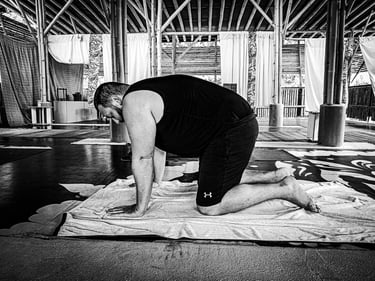Alignment for Strength and Stability


Arranging our body and coordinating with our breath in anatomically correct positions helps us find strength and create a stable foundation for a safe practice. Often, these alignments make poses easier to execute and hold, reducing the risk of injury.
However, these alignments are not always intuitive and require practice to develop an awareness of where our limbs and joints need to be. Over time, this awareness can translate into daily life, helping us to move, sit and stand with better posture.
Proper alignment allows our muscles and joints to function without excess stress on them, which is essential for maintaining joint health and preventing strain. For example, in Tadasana, aligning the ears over the shoulders, shoulders over the hips, and hips over the ankles creates a vertical line that evenly distributes weight through the body. This not only makes the pose more stable but also protects the lower back and knees from unnecessary strain.
Similarly, in Table Top Pose, ensuring that the wrists are directly beneath the shoulders and the knees are beneath the hips creates a strong foundation. This alignment helps distribute weight evenly across the joints, preventing strain on the wrists and lower back. Keeping the spine in a neutral position, with the head aligned with the spine, supports the natural curvature of the back, which is crucial for avoiding discomfort or injury during weight-bearing exercises.
Knowing how to move, sit and stand properly can help you stay active and prevent broken bones and disability. For instance, when sitting, maintaining a neutral spine with our shoulders relaxed and feet flat on the floor minimises stress on the lower back and promotes better circulation.
Practising proper alignment not only enhances our yoga practice but also supports our overall well-being by allowing our body to function efficiently and safely in all activities.


Other posts
